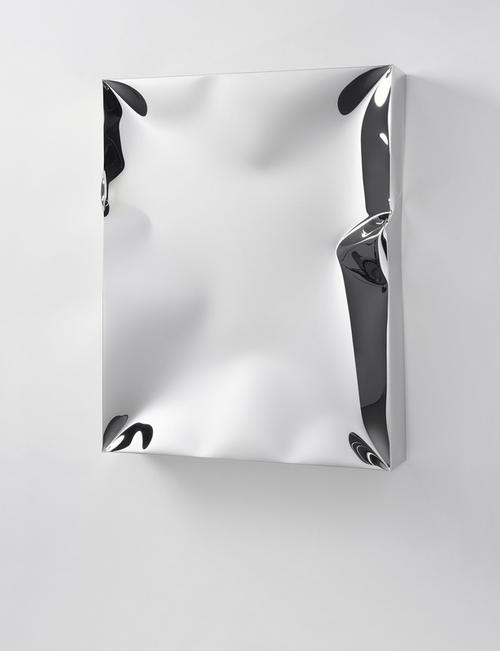
The magazine is wrapped in mirror foil, the reader is first confronted with himself and has to tear down the facade to get to the inside.

All throughout the magazine you can find different habits of the women. One of these habits confronts the reader immediately on the first page
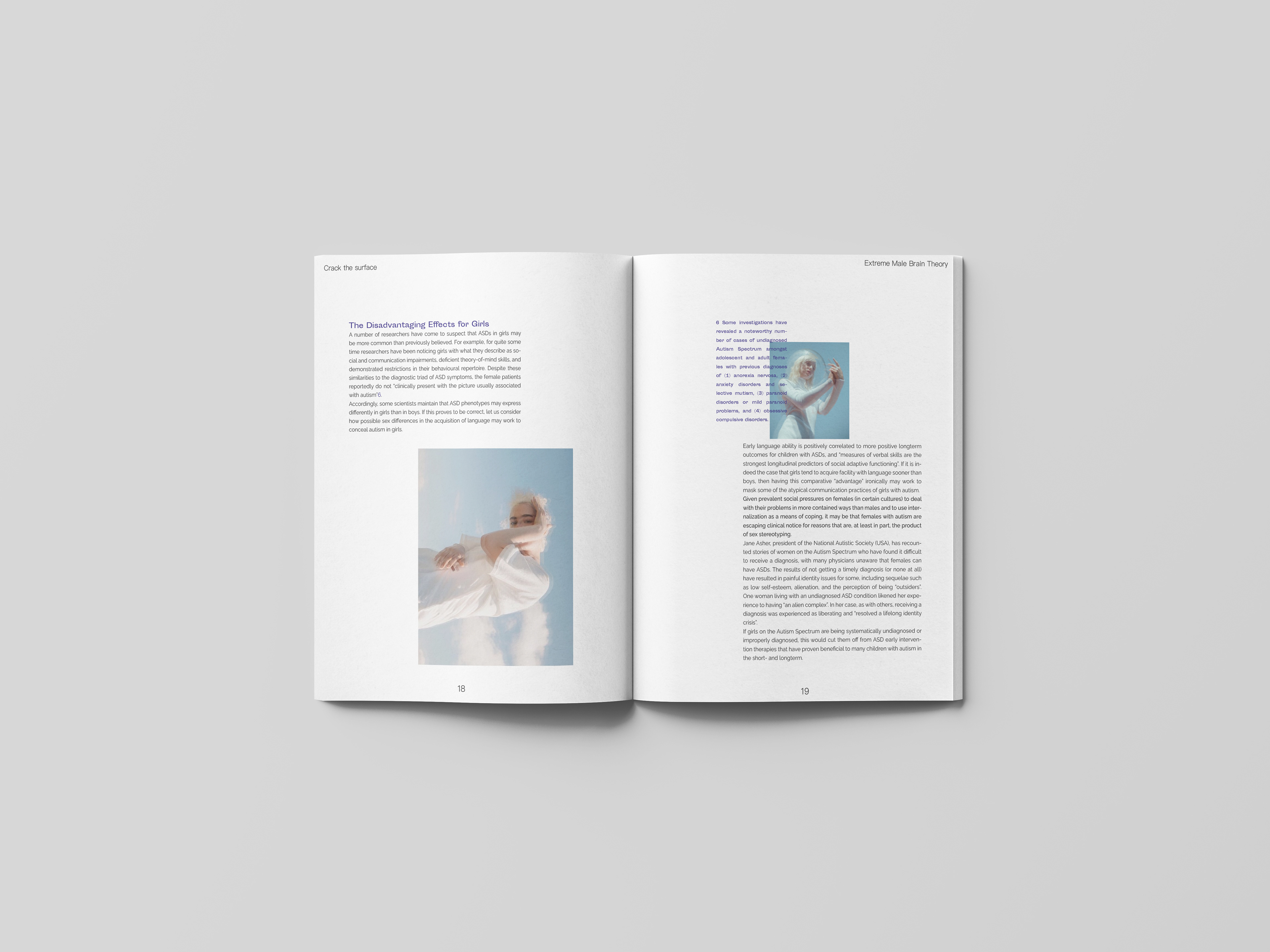
So slowly the text blocks slide, so the facade slowly breaks down.
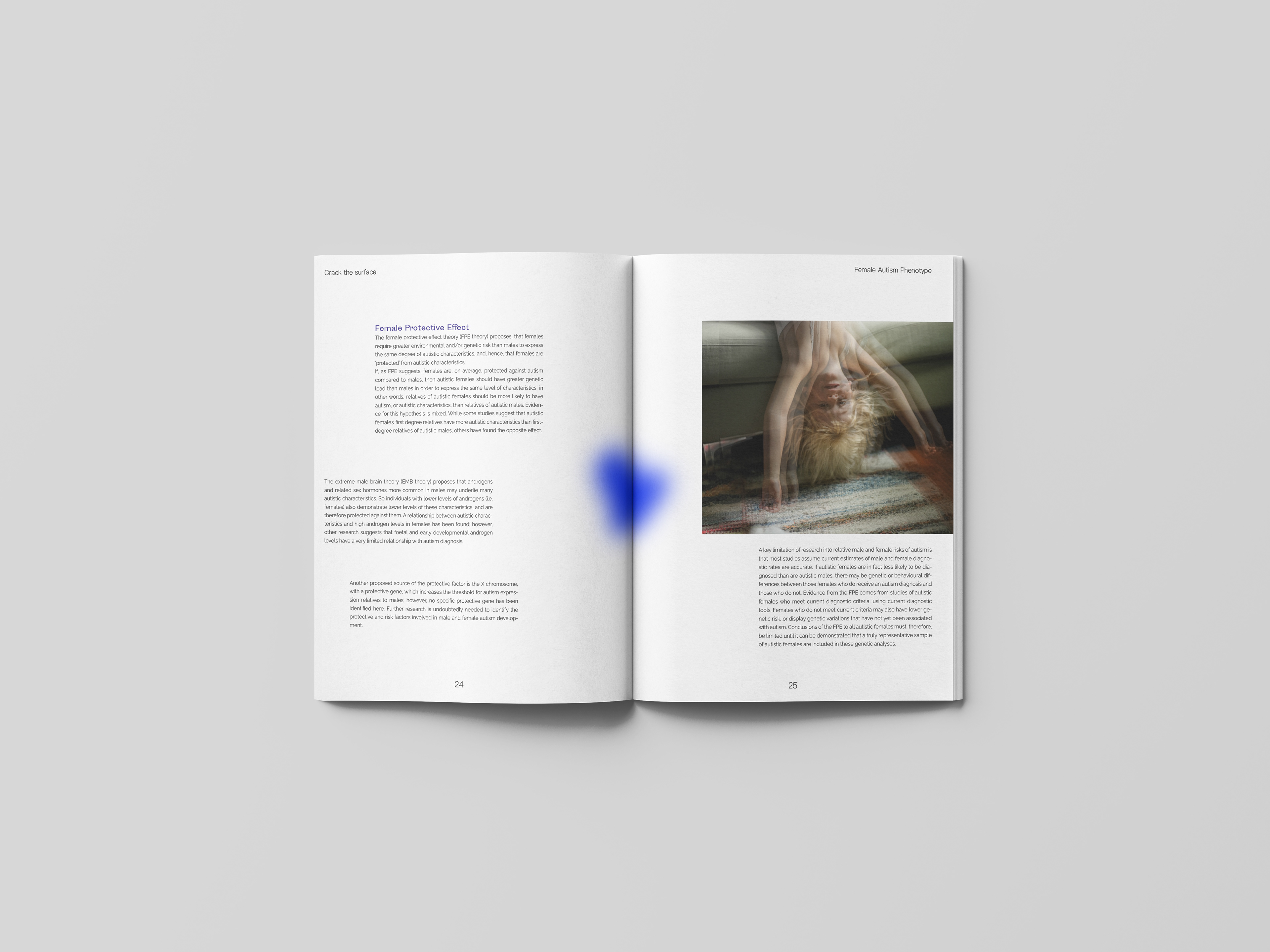
The layout changes more and more. The colors bring the reader into the world of women where they don’t have to disguise themselves to adapt to the society
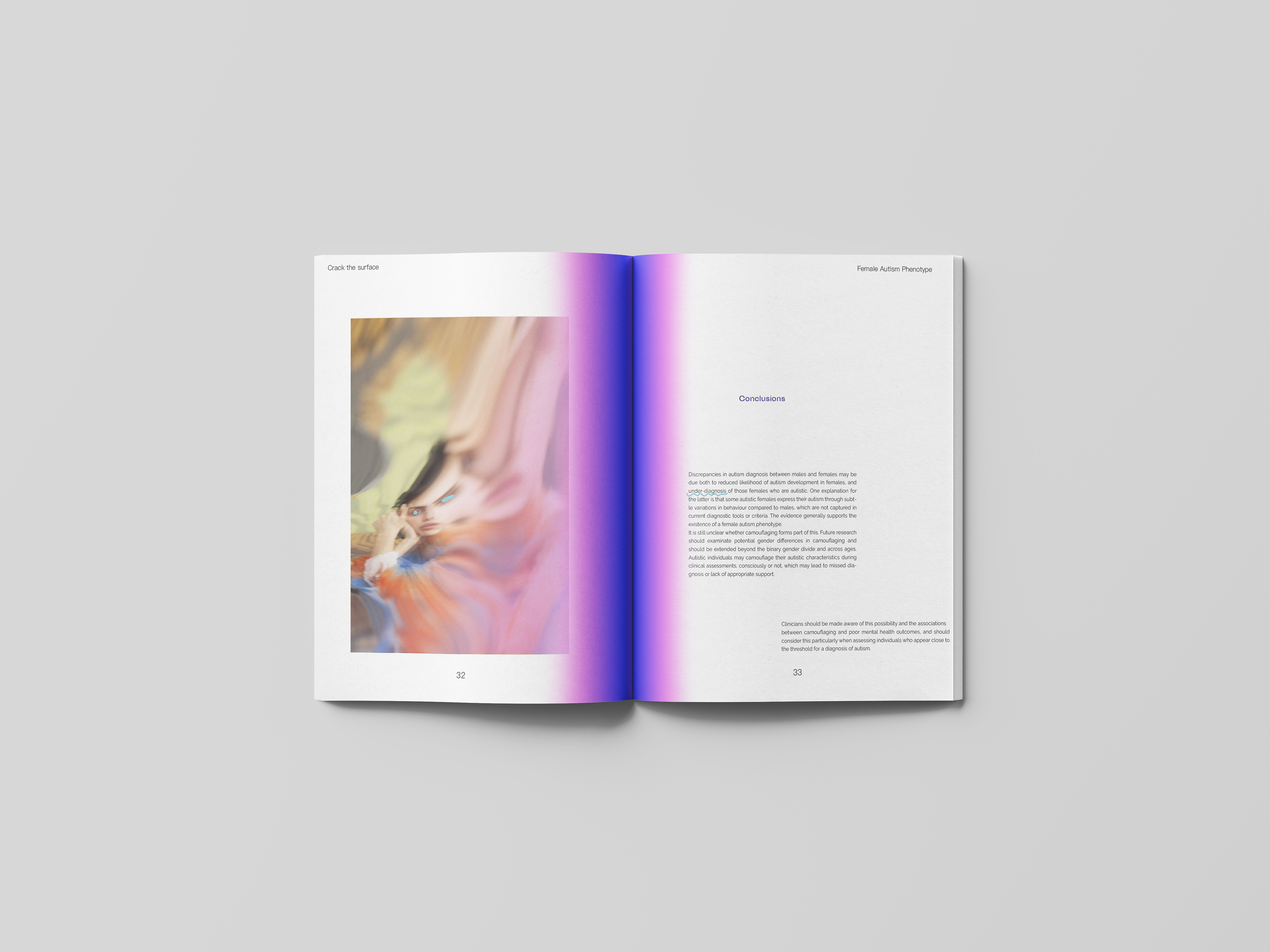
When choosing the paper, we thought of fragile paper, so some illustrations are printed on lime paper, because the reader should not only deal with the pages sensitively but also with the people affected.
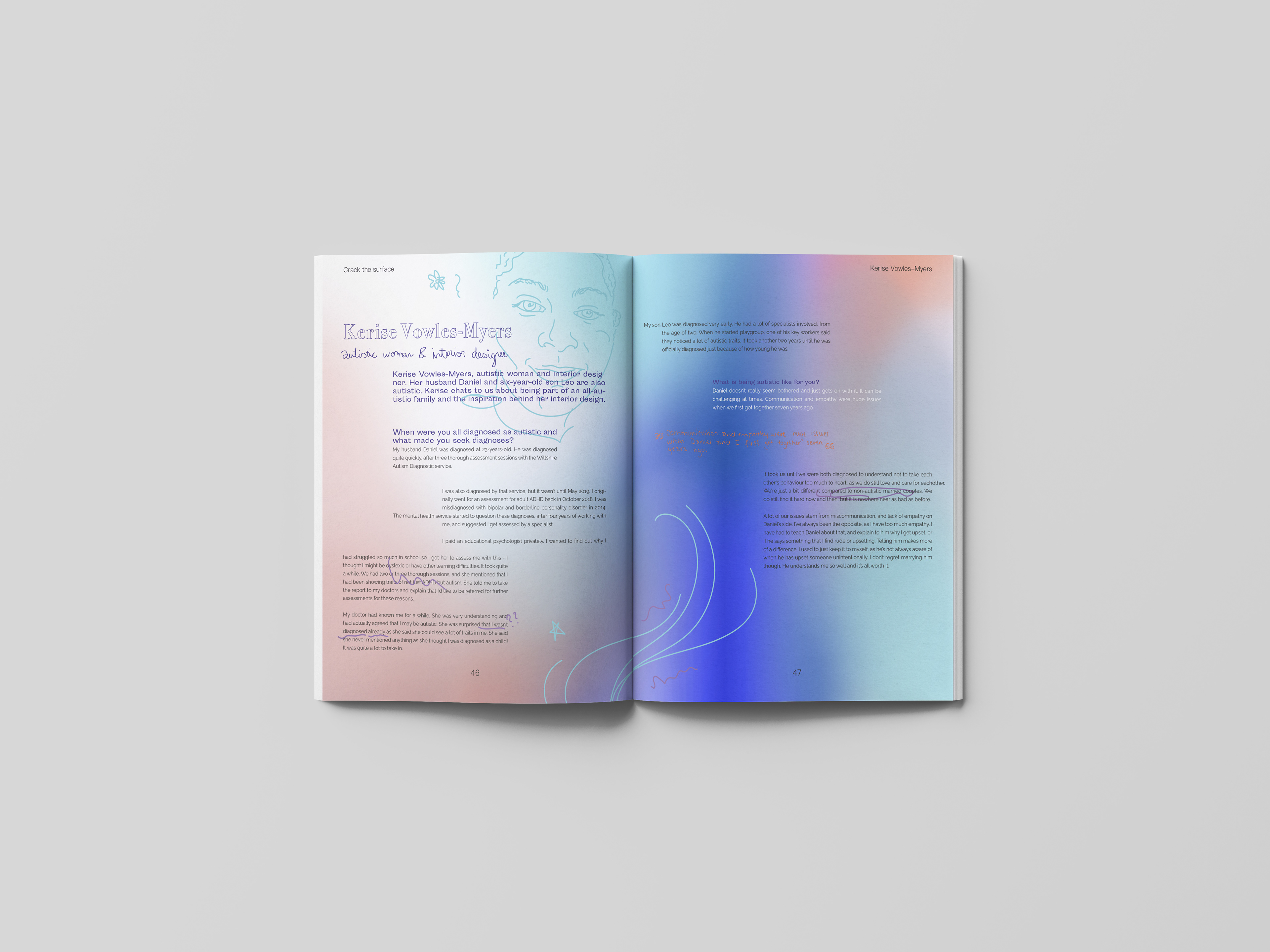
We have created a link to our topic for both the paper and the font for the headlines. Namely, we only worked with the outline with this font. Because even in the case of a woman with a vision, one only sees the outside and not what it looks like inside.

Articles are interrupted by illustrations and poetry. Women affected by autism find it difficult to hold a long conversation and wander off again and again.
Crack the surface is a magazine I made with my fellow students Lisa Putz & Emma Wohnsiedler.
The theme of the editorial course was “feeling foreign”. We have decided to make a magazine about autism among women, as they often feel different or “alien” in our society. The magazine deals with informative content as well as personal, poetic content.
The layout of the magazine follows the concept of a “tension curve.” We wanted to make the feelings that autistic women experience, tangible.
Women affected by autism adapt to society and hide their feelings. So the layout is simple at first and the deeper you dive into the pages, the deeper you are in their feelings.
Women affected by autism adapt to society and hide their feelings. So the layout is simple at first and the deeper you dive into the pages, the deeper you are in their feelings.
*All rights of the pictures and texts remain with the authors. The magazine only serves as a Uniproject*
A flip through the magazine
